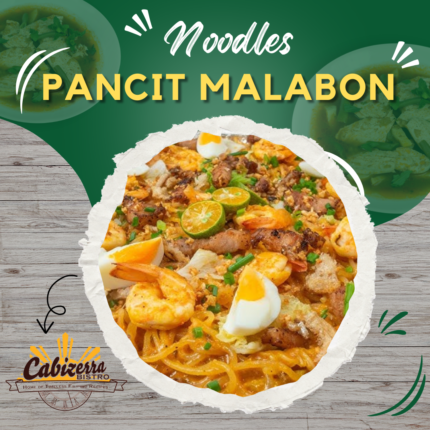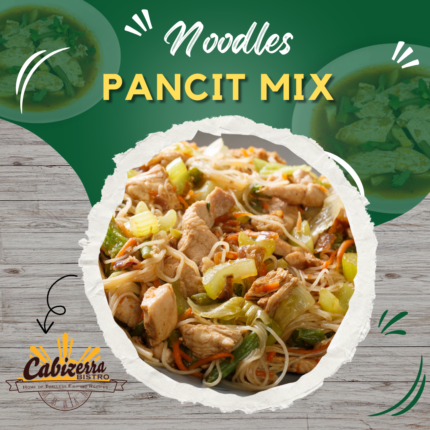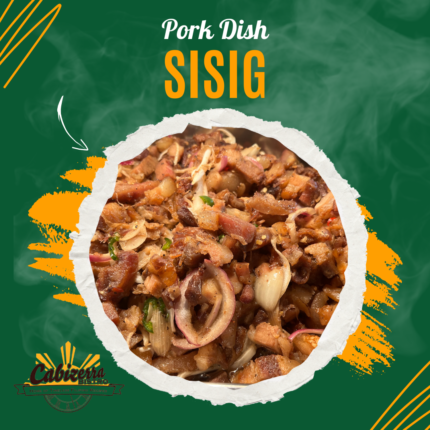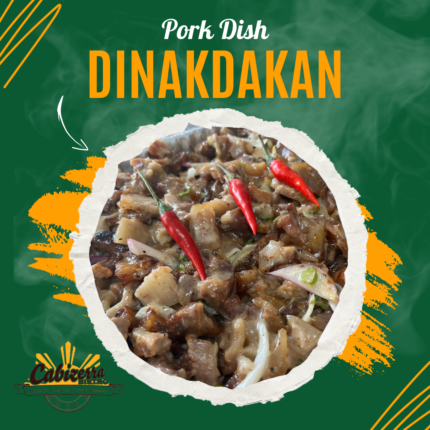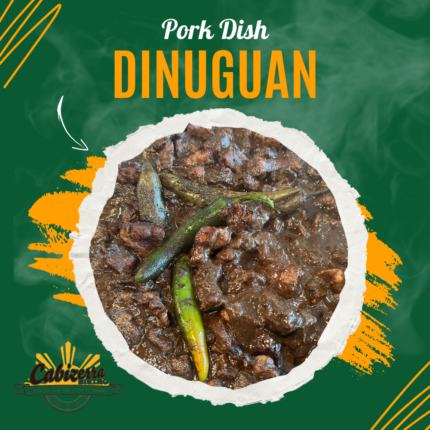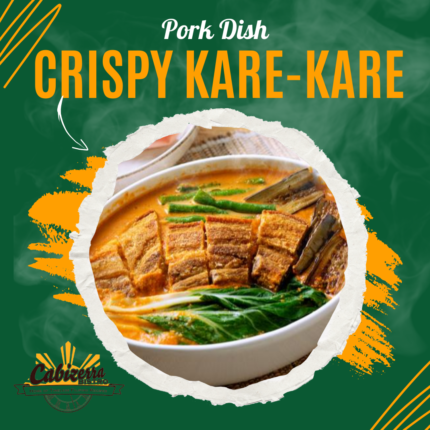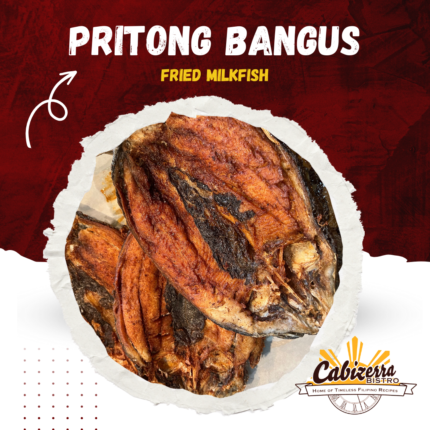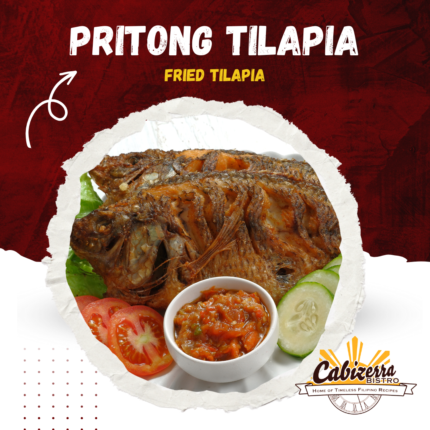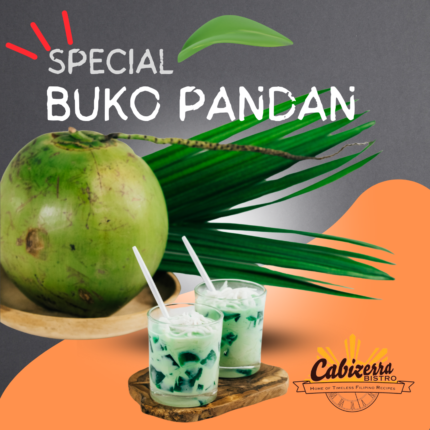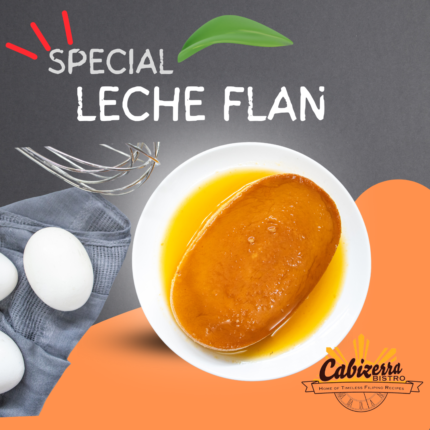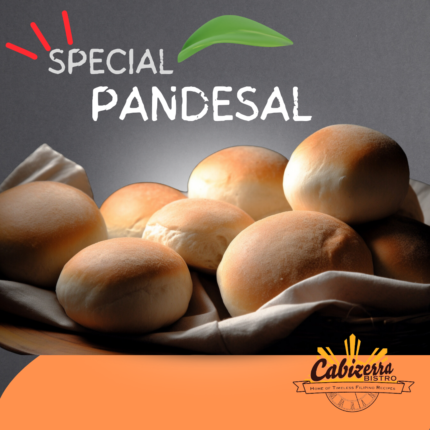Pancit Malabon
Pancit Malabon is a popular Filipino noodle dish that originated in Malabon City, Philippines. It's known for its thick rice noodles (bihon) that are stir-fried with a flavorful sauce and topped with an array of seafood, meat, and vegetables.
Pancit Malabon is a festive and colorful dish, often served during special occasions and celebrations in the Philippines. Its combination of flavors and textures makes it a favorite among locals and visitors alike.
Pancit Mix
Cabizerra's unique version of Miki bihon is another Filipino noodle dish that combines two types of noodles: miki noodles and bihon noodles. Miki noodles are thick egg noodles, while bihon noodles are thin rice vermicelli noodles. The combination of these two noodles gives miki bihon its unique texture and flavor.
Miki bihon is typically garnished with sliced green onions and calamansi or lemon wedges before serving. It's a delicious and satisfying noodle dish that's enjoyed by many for its rich flavor and hearty texture.
Pinoy Spaghetti
Pinoy spaghetti is a Filipino version of spaghetti that has its own unique sweet and savory flavor profile. It's a popular dish in the Philippines, often served at parties, gatherings, and family meals. Pinoy spaghetti is usually sweeter than the Italian or Western-style spaghetti due to the addition of sugar or condensed milk. It's often served over cooked spaghetti noodles and topped with grated cheese, which adds a creamy and salty contrast to the sweetness of the sauce.
Pinoy spaghetti is enjoyed by people of all ages in the Philippines, and it's often considered a comfort food that evokes feelings of nostalgia and home. It's a delicious and comforting dish that reflects the Filipino palate's love for sweet and savory flavors.
Pork Crispy Sisig
A Crispy Sisig Party Tray is a delectable Filipino dish featuring sizzling chopped pork cheeks, ears, and liver seasoned with tangy calamansi juice, onions, and chili peppers. Served on a sizzling platter, it's crispy, savory, and packed with flavor, making it an irresistible centerpiece for any celebration or gathering.
Pork Dinakdakan
Dinakdakan is a traditional Filipino dish originating from the Ilocos region in the northern part of the Philippines. It's a savory and tangy appetizer or main dish made primarily from grilled pork parts, typically including pig's ears, cheeks, and liver. After grilling, the meat is chopped into bite-sized pieces and mixed with various flavorings such as calamansi juice (a local citrus fruit), vinegar, onions, and chili peppers. The dish is known for its bold and zesty taste, with the acidity of the vinegar and calamansi cutting through the richness of the grilled pork. Dinakdakan is often enjoyed as a pulutan (beer match) or as part of a hearty meal, served alongside rice or with a side of pickled vegetables. It's a favorite among Filipinos for its robust flavor and is commonly served during gatherings and celebrations.
Pork Dinuguan
Dinuguan is a classic Filipino dish known for its rich and savory flavor. It is often referred to as "chocolate meat" due to its dark color, although it doesn't contain chocolate. The main ingredient of dinuguan is pork, typically pork belly or shoulder, although other parts such as intestines or liver may also be used.
Pork Kare-Kare
Pritong Bangus
"Pritong Bangus" is a Filipino dish consisting of fried milkfish. Bangus, also known as milkfish, is a popular fish in the Philippines due to its tender, flavorful flesh.
Pritong bangus is often served with a side of steamed rice and a dipping sauce made from vinegar, soy sauce, and chopped onions and chili peppers. It's a popular and satisfying dish enjoyed by many Filipinos for its crispy texture and delicious flavor.
Pritong Tilapia
"Pritong Tilapia" is another Filipino dish, similar to "Pritong Bangus," but using tilapia fish instead. Tilapia is a freshwater fish that is widely consumed in many parts of the world due to its mild flavor and firm texture. To prepare pritong tilapia, the fish is usually cleaned and scaled, with the head, tail, and internal organs removed. It's then typically cut into slices or left whole, depending on personal preference and the size of the fish. It's a popular and budget-friendly dish in the Philippines, enjoyed for its crispy texture and mild, delicate flavor.
Special Buko Pandan
Buko Pandan is a popular Filipino dessert that combines two main ingredients: buko (young coconut) and pandan-flavored gelatin. It's a refreshing and creamy dessert that's often served at parties, gatherings, and special occasions in the Philippines. Buko Pandan is often served chilled and garnished with additional shredded coconut or a drizzle of condensed milk on top. Its combination of creamy coconut, aromatic pandan, and chewy gelatin makes it a delightful and refreshing treat enjoyed by many Filipinos.
Special Leche Flan
Leche flan is a delicious and creamy caramel custard dessert that is popular in many Spanish-speaking countries and the Philippines. It's made with simple ingredients like eggs, condensed milk, and sugar. The custard is traditionally steamed in a mold until it sets, creating a smooth and velvety texture. After it cools, the leche flan is inverted onto a plate, revealing a beautiful layer of golden caramel sauce on top. It's a sweet treat often enjoyed on special occasions and holidays, and it's beloved for its rich flavor and silky consistency.
Special Pandesal
Pandesal is a traditional Filipino bread roll that is a staple in many households and bakeries throughout the Philippines. It is a small, soft, and slightly sweet bread roll that is typically enjoyed for breakfast or as a snack, often paired with coffee or hot chocolate.
The name "pandesal" comes from the Spanish words "pan de sal," which translates to "bread of salt." However, despite its name, pandesal is not actually salty; it's more commonly slightly sweet, with a mild flavor.
Freshly baked pandesal is best enjoyed while still warm from the oven, with its soft and fluffy texture and slightly crusty exterior. It's often eaten plain or with a spread of butter or margarine, and sometimes paired with cheese, jam, or other fillings for added flavor.
Pandesal holds a special place in Filipino culture and cuisine, and it's a beloved comfort food that brings back fond memories of home for many Filipinos.
1 Dozen (12pcs)


